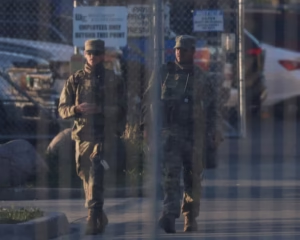Kerr County, located in the heart of the Texas Hill Country, is a region known for its scenic landscapes, deep-rooted history, and tight-knit communities. With rolling hills, winding rivers, and limestone bluffs, it attracts thousands of visitors each year who come for relaxation, outdoor adventures, and cultural experiences. Despite its peaceful reputation, recent events have brought Kerr County into the national spotlight following one of the deadliest natural disasters in modern Texas history.
Named after James Kerr, a key figure in the Texas Revolution and one of the state’s early settlers, Kerr County was officially established in 1856. The county seat, Kerrville, serves as the cultural and economic hub of the region. Over the years, Kerr County has grown into a vibrant community with a population nearing 55,000 residents. While it maintains a small-town charm, it offers many amenities, including Schreiner University, a respected liberal arts college, and several museums, parks, and medical facilities.
Geographically, the county is part of the Edwards Plateau, an area characterized by rugged limestone terrain, clear springs, and dense oak and cedar woodlands. The Guadalupe River, which cuts through the region, plays a central role in both the local ecosystem and economy. The river not only supports agriculture and wildlife but is also a major attraction for tourists seeking recreational activities like tubing, kayaking, and fishing. The river’s beauty, however, comes with risks. Sudden heavy rainfall can cause flash flooding, a threat that tragically became reality in July 2025.
During the July Fourth holiday weekend, intense storms caused the Guadalupe River to rise by over 26 feet in less than an hour. The resulting flash floods devastated large areas of Kerr County, particularly popular camping spots near the river. One of the worst-hit locations was Camp Mystic, a well-known Christian girls’ summer camp. The floodwaters swept away cabins and tents, resulting in over 100 confirmed deaths and more than 160 people reported missing. Many of the victims were out-of-state visitors, staying in cabins or campsites without formal registration records. Volunteers, helicopters, horses, and airboats were all deployed to assist rescue operations, making it one of the largest search-and-recovery efforts in Texas history.
Beyond its recent tragedy, Kerr County has long been recognized for its tourism and summer camp culture. The region is home to many seasonal camps, including Camp La Junta and Mo-Ranch, which attract youth from across the country. These facilities often sit along the banks of the Guadalupe River, surrounded by dense woods and open fields, offering campers a chance to connect with nature and spirituality.
The area also hosts the popular Kerrville Folk Festival, which draws artists, musicians, and visitors each year. The Museum of Western Art and the Riverside Nature Center in Kerrville offer cultural insights into the region’s past and environmental diversity. Towns like Ingram and Hunt further enhance the county’s character with their galleries, general stores, and riverfront lodges.
Kerr County’s climate is humid subtropical, marked by hot summers and mild winters. Rainfall is most common in the spring and fall, contributing to lush vegetation but also raising the risk of flooding, especially in low-lying areas. Despite modern infrastructure, emergency alert systems still struggle to reach campers in remote areas quickly, something local officials are now reviewing closely in the wake of the July disaster.
Today, while rescue and recovery efforts continue, the spirit of Kerr County remains unbroken. Communities across the county are coming together to support survivors and families affected by the floods. Volunteers, first responders, and local leaders are working tirelessly, showing the resilience that has long defined this corner of Texas. Though marked by sorrow, Kerr County’s legacy of unity, nature, and history continues to shine.







